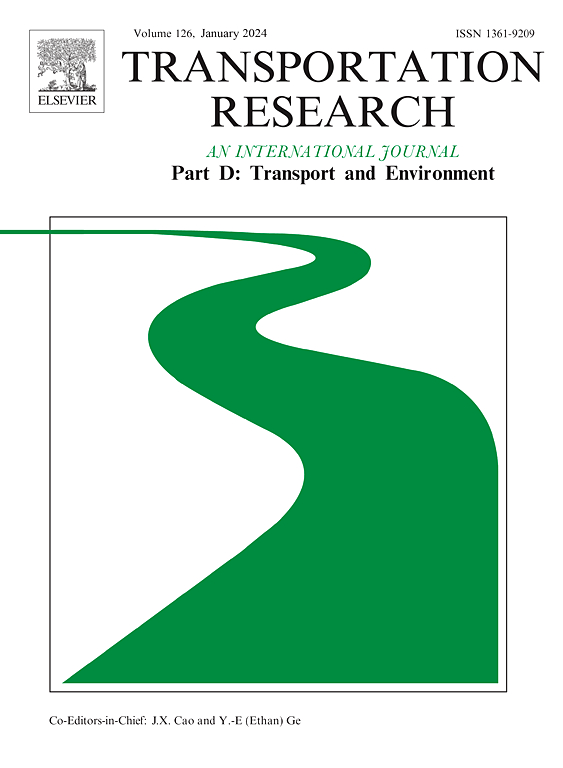以压缩生物甲烷为燃料的垃圾车从油井到车轮的排放
IF 7.3
1区 工程技术
Q1 ENVIRONMENTAL STUDIES
Transportation Research Part D-transport and Environment
Pub Date : 2025-04-09
DOI:10.1016/j.trd.2025.104746
引用次数: 0
摘要
向生物燃料的过渡,特别是从废弃生物质中提取的生物甲烷,被视为向运输脱碳迈出的积极一步。通过捕获和利用或封存沼气升级产生的废气二氧化碳,以及通过开发废物收集、生物甲烷生产、加压和车辆加油等相互关联的系统,提高了环境效益。这项从油井到车轮的分析侧重于垃圾车,以评估采用不同碳捕获策略的各种生产和管理方案,确定原料和技术的最佳组合。意大利使用多种原料进行厌氧消化和沼气厂的地理分布,以及其高生产潜力,为分析提供了坚实的基础。结果表明,与压缩天然气相比,压缩生物甲烷的温室气体减排幅度在55%至75%之间,如果采用某些原料和碳捕获技术,可能会更高,这可以完全抵消厌氧消化和沼气升级对气候变化的影响。本文章由计算机程序翻译,如有差异,请以英文原文为准。
Well-to-wheels emissions of garbage trucks fuelled with compressed biomethane
The transition to biofuels, particularly biomethane from waste biomass, is seen as a positive step towards decarbonising transport. Environmental benefits are enhanced by capturing and using or sequestering off-gas CO2 from biogas upgrading, and by developing interconnected systems of waste collection, biomethane production, pressurization, and vehicle refuelling. This well-to-wheels analysis focuses on garbage trucks to evaluate various production and management scenarios with different carbon capture strategies, identifying the best combination of feedstock and technology. The use of diverse feedstocks for anaerobic digestion and the geographical spread of biogas plants in Italy, together with its high production potential, provide a solid basis for analysis. Results indicate GHG emission reductions for compressed biomethane ranging from 55 % to 75 % compared to compressed natural gas, potentially higher with certain feedstocks and carbon capture technologies, which can completely counter climate change impacts from anaerobic digestion and biogas upgrading.
求助全文
通过发布文献求助,成功后即可免费获取论文全文。
去求助
来源期刊
CiteScore
14.40
自引率
9.20%
发文量
314
审稿时长
39 days
期刊介绍:
Transportation Research Part D: Transport and Environment focuses on original research exploring the environmental impacts of transportation, policy responses to these impacts, and their implications for transportation system design, planning, and management. The journal comprehensively covers the interaction between transportation and the environment, ranging from local effects on specific geographical areas to global implications such as natural resource depletion and atmospheric pollution.
We welcome research papers across all transportation modes, including maritime, air, and land transportation, assessing their environmental impacts broadly. Papers addressing both mobile aspects and transportation infrastructure are considered. The journal prioritizes empirical findings and policy responses of regulatory, planning, technical, or fiscal nature. Articles are policy-driven, accessible, and applicable to readers from diverse disciplines, emphasizing relevance and practicality. We encourage interdisciplinary submissions and welcome contributions from economically developing and advanced countries alike, reflecting our international orientation.

 求助内容:
求助内容: 应助结果提醒方式:
应助结果提醒方式:


